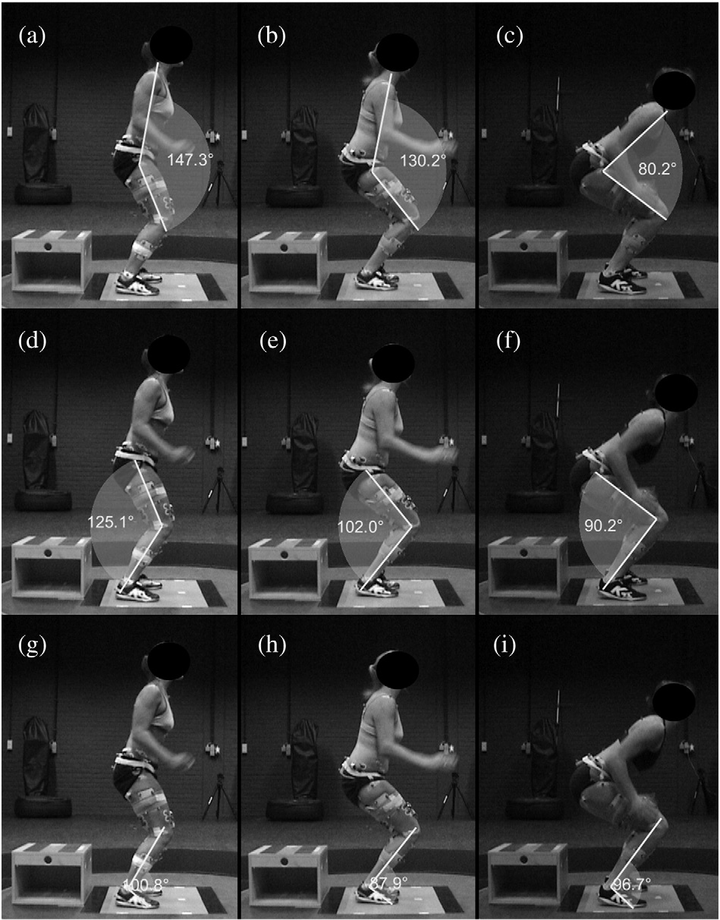Can two-dimensional measured peak sagittal plane excursions during drop vertical jumps help identify three-dimensional measured joint moments?

Abstract
Background: Less optimal sagittal plane movement patterns are believed to increase knee injury risk in female athletes. To facilitate clinical screening with a user-friendly method, the purpose of the present study was to examine the temporal relationships between two-dimensional measured sagittal plane kinematics and threedimensional joint moments during the double-leg drop vertical jump (DVJ) and single-leg DVJ (SLDVJ). Methods: Fifty injury-free female athletes were tested. Maximal excursions of hip flexion, knee flexion and ankle dorsiflexion were measured through two-dimensional video analysis. Three-dimensional motion and ground reaction forces were recorded to calculate external hip flexion, knee flexion and knee abduction moments during the entire stance phase of DVJ and SLDVJ. One-dimensional statistical parametric mapping was used to examine relationships between peak two-dimensional kinematic variables and three-dimensional moment profiles. Results: Hip flexion was significantly related to the hip and knee flexion moment for both tests and knee abduction moment for DVJ during the time frames corresponding with highest three-dimensional moments, while knee flexion was significantly related to the hip flexion moment during these time frames. No significant relationships were found for ankle dorsiflexion with any of the joint moments. Conclusions: Two-dimensional measured sagittal plane hip flexion angles at the deepest landing position were associated with peak joint moments of the hip and knee during DVJ and SLDVJ, while the amount of knee flexion was only associated with the hip flexion moment. Assessment of knee injury risk with two-dimensional video analysis could benefit from measuring maximal hip flexion, more so than knee flexion.